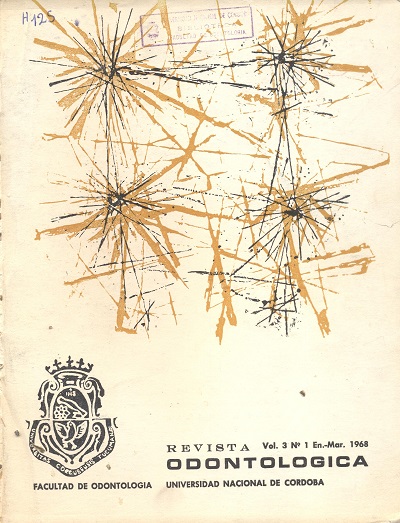Doloy y audioanalgesia
Keywords:
Audioanalgesia, PainAbstract
The author considers, though it is true that it has been clinically demonstrated ·¡·hrough ample and preved experiences, ·rhat ·;·he positive result of ¡·he audioanalgesic through which it has been possible to inhibit ;·he sensitive stimulant, it has not yet been posible to clarify i·otally ·;·he neurophysiologic mechanism that would explain ·;·he process through which ¡·he acoustic sitimu The author considers, though it is true that it has been clinically demonstrated ·¡·hrough ample and preved experiences, ·rhat ·;·he positive result of ¡·he audioanalgesic through which it has been possible to inhibit ;·he sensitive stimulant, it has not yet been posible to clarify i·otally ·;·he neurophysiologic mechanism that would explain ·;·he process through which ¡·he acoustic sitimulant is capable ·;·o produce analgesia. The numerous studies and experiences that hove been arried out, induced the intervention of two mechanisms i·he result being, ·che bloking of ·;·he sensitive sensorial stimulant. lt is ·¡·hought ·;·hat a first acoustic stimulant mechanism and the analgesic arrive ·;·o the same thalamic station that makes the impulse that arrives first "to recruit neurons in favour of the corresponding way, resting only the posible way of access to the cortex of ·rhe stimulant. This would explain why, if ¡·he acoustic impulse arrives f¡rst, ·;·he painful stimulant does not register or does it moderately. Other mechanism would be that induces the intervention of the stimulant of the net-substance, as same plays a very important role in i·he mechanism of caution, making ·;·hat i·he individual treats with increasing intensity the stimulant that most interests him. The experiences show ·;·hat ·;·he auditive impulse can be blocked by other sensoria! impulses.
Downloads
Downloads
Issue
Section
License
Aquellos autores/as que tengan publicaciones con esta revista, aceptan los términos siguientes:
- Los autores/as conservarán sus derechos de autor y garantizarán a la revista el derecho de primera publicación de su obra, el cuál estará simultáneamente sujeto a la Licencia de reconocimiento de Creative Commons que permite a terceros:
- Compartir — copiar y redistribuir el material en cualquier medio o formato
- La licenciante no puede revocar estas libertades en tanto usted siga los términos de la licencia
- Los autores/as podrán adoptar otros acuerdos de licencia no exclusiva de distribución de la versión de la obra publicada (p. ej.: depositarla en un archivo telemático institucional o publicarla en un volumen monográfico) siempre que se indique la publicación inicial en esta revista.
- Se permite y recomienda a los autores/as difundir su obra a través de Internet (p. ej.: en archivos telemáticos institucionales o en su página web) después del su publicación en la revista, lo cual puede producir intercambios interesantes y aumentar las citas de la obra publicada. (Véase El efecto del acceso abierto).

